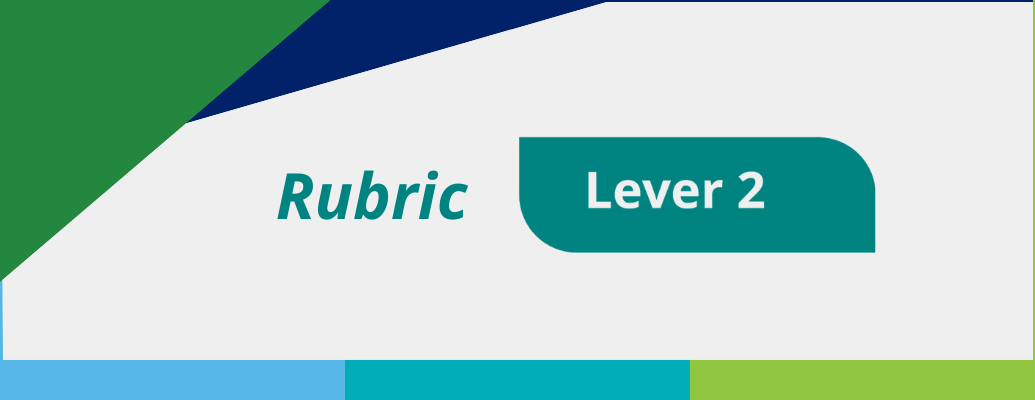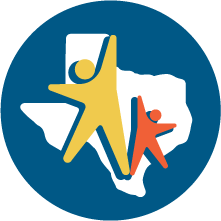
ESSENTIAL ACTION: DLI program clearly prioritizes emergent bilingual students, has a clear language and content allocation plan, and ensures 50% of instruction in partner language.
Certified bilingual teachers are in areas required by the education code.
There is limited professional development focused on language proficiency.
Certified bilingual teachers are in core content areas.
There is some professional development that supports and strengthens partner language and/or English proficiency.
Certified bilingual teachers in all content areas.
Professional development to support and strengthen partner language and/or English proficiency of dual language teachers.
A language allocation plan exists, but is not well-known.
Some decisions are based on the language allocation plan.
There is an evaluation of the program, but the focus is on English data.
Few of the support services are aligned with the language allocation plan.
A language allocation plan exists and is known.
The language plan is understood by the campus leaders and guides many, but not all decisions.
An evaluation of the program includes qualitative and quantitative data in both languages, but not an equal amount.
Several, but not all of the support services are aligned with the language allocation plan.
A clear allocation plan that is aligned with the latest research.
A plan implemented with fidelity and monitored by all campus leaders.
An evaluation based on qualitative and quantitative data in both program languages and biliteracy trajectory data.
Support services (e.g., special education, gifted education, ESL) and specials (e.g., art, music) aligned with the language allocation plan.
The dual language program is run in grades PK-3 only.
The students served are mostly emergent bilingual students.
Newcomers are not offered the dual language program.
Some students learning English are exited from the dual language program after they are reclassified.
The dual language program runs through the grade levels of the elementary schools.
The students served are mostly emergent bilingual students.
Newcomers are offered the dual language program in grades PK-1st.
Reclassification of some emergent bilingual students happens, but the school does not encourage or discourage reclassified students to stay in the program.
Programming beginning at PK, K or 1st and continuing to roll up each year and through 5th or 6th grade. Students receive a recommendation to continue in a dual language secondary program.
Primary language English speakers can enroll in the dual language program for all grades PK-12.
Newcomers who speak the partner language enter the dual language program at all levels.
Re-classification of some emergent bilingual students, but there is “no” exiting.
Linguistically Sustaining Practices
Content instruction is based on the district’s curriculum. There are steps taken to support a second language. The goals of bilingualism, biliteracy and global awareness are shared by some of the staff.
Content instruction is rooted in Linguistically Sustaining Practices, communicated, sequenced and scaffolded to ensure high academic achievement in one language. The goals of bilingualism, biliteracy and global awareness are valued.
Linguistically Sustaining Practices, linguistically accommodated content instruction and design that is communicated, sequenced, and scaffolded to ensure high academic achievement in both program languages, bilingualism, biliteracy and global awareness.
Linguistically Sustaining Practices
There is a limited plan that addresses global awareness. Some teachers address this goal in their classroom.
The school modifies the district curriculum to incorporate global awareness when appropriate.
A plan exists that addresses the development of global awareness and elevates biliteracy, among all stakeholders.
Systems for the selection of linguistically appropriate and linguistically sustaining instructional materials exist.
Opportunities for stakeholders to be involved in creating a plan that addresses the development of global awareness and elevates biliteracy, among all stakeholders, including teachers, school staff, administrators, and community members.
Systems in place for the selection of appropriate linguistically sustaining instructional materials and global awareness and their thoughtful integration into the curriculum.
The language allotment time is not consistent in all classrooms.
The understanding about the importance of translanguaging and print in both languages exists with some adults in the program, but not all.
The language allotment time is consistent across grade levels, but not cohesively across the school.
There is an asset-based lens on students’ translanguaging, but little attention to the strategic use of instructional languages.
An equal allotment of oral language and literacy “development” time in both languages (50/50 model) is provided, or initially more in the partner language (90/10, 80/20 model) and then allotted equal time in both languages once the program reaches a 50/50 division of instruction in the two languages.
An asset-based lens on students’ translanguaging and print in both languages, but a strategic use of language of instruction is upheld.
